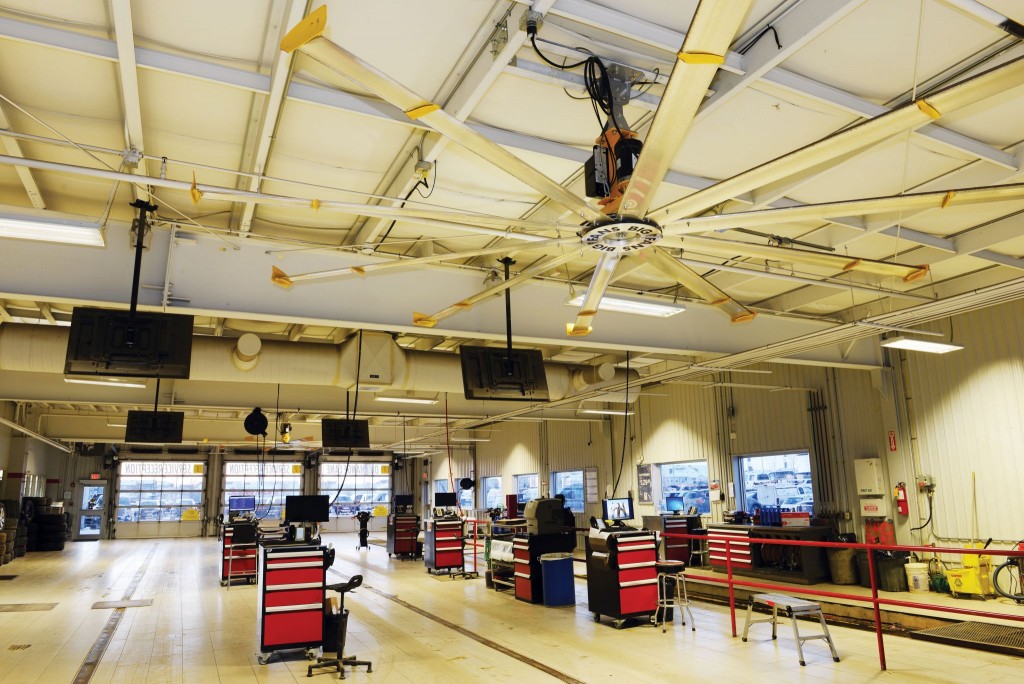Fans of the green building boom

Fans and holistic design
The integration of design, construction, building operations, and human health is most evident in the growing field of green certifications and achievements. Fans can critically reduce energy consumption for buildings working toward ranking or assessment through green certifications.
When Kentucky’s Berea College started planning Deep Green, an ecologically advanced dormitory, they incorporated both HVLS and ultra-efficient residential fans into their design. The building relies on features that work in unison: energy-efficient glass windows, shades, ceiling fans in each room and HVLS fans in common areas. Together, the system components give the building a higher thermostat setpoint in the summer and an overall energy savings of 58 per cent when compared to other dormitories. The finished building achieved Platinum under the Leadership in Energy and Environmental Design (LEED) program, along with Living Building Challenge Petal Recognition and Net Zero Ready Status.
Aside from the list of accolades and innovations, the project is a model of more-efficient HVAC system design in new construction. Research suggests the fastest adopters of green products are architects and engineers; Deep Green is a prime example of this movement. The team incorporated fans from the inception of the project onward, and worked closely with local manufacturers to model energy-use savings, review materials requirements, and ensure a holistic HVAC system and an integrated design approach.
Canada is poised for a surge in green building, with architects and designers at the forefront of adopting new sustainable practices and materials. Innovative and efficient fan use is key to ensuring HVAC systems meet industry demands.
 Rachel Tsvetanov is a senior writer for Big Ass Solutions, a designer and manufacturer of high-volume, low-speed (HVLS) fans. She works with architects, designers, and facilities managers on fan and lighting applications for case study development. Tsvetanov also creates content for continuing education courses, green building conferences, and industry publications. She can be reached via e-mail at rachel.tsvetanov@bigasssolutions.com.
Rachel Tsvetanov is a senior writer for Big Ass Solutions, a designer and manufacturer of high-volume, low-speed (HVLS) fans. She works with architects, designers, and facilities managers on fan and lighting applications for case study development. Tsvetanov also creates content for continuing education courses, green building conferences, and industry publications. She can be reached via e-mail at rachel.tsvetanov@bigasssolutions.com.







